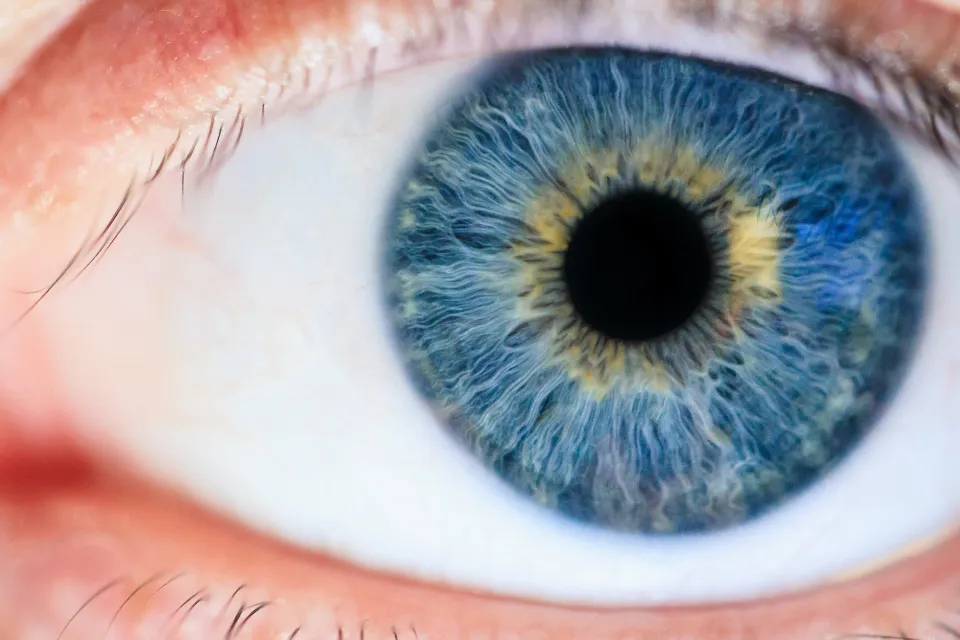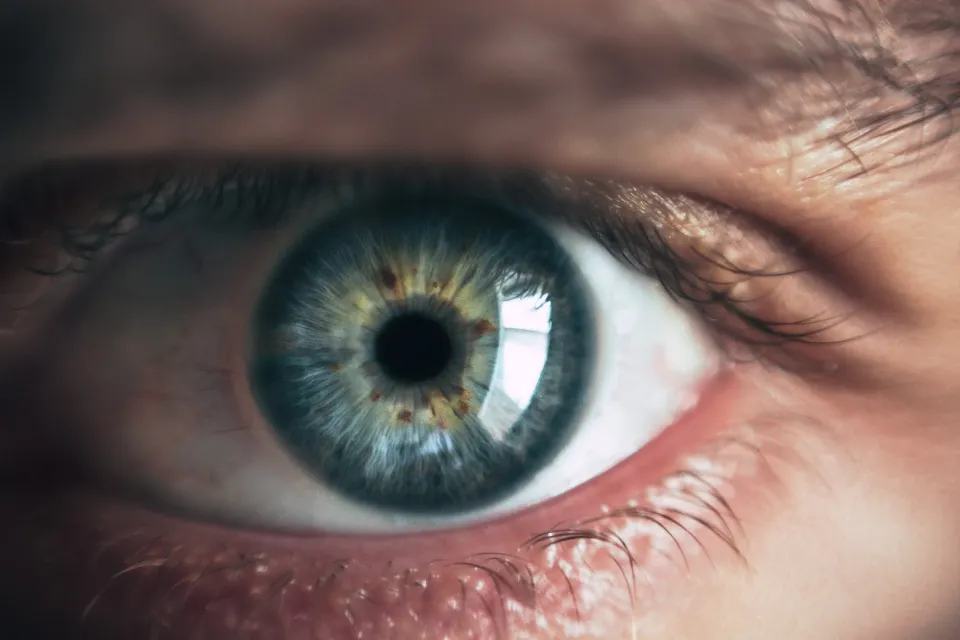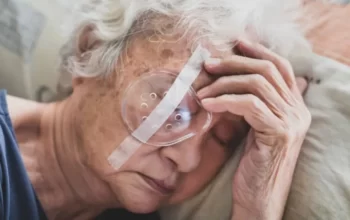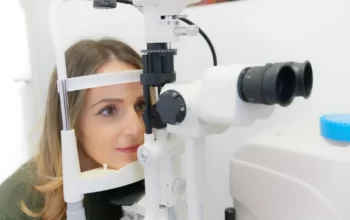
Most patients who have narrow angles are hyperopic, or “far sighted.” These are usually people who have never needed glasses for clear vision.
What is the Angle, and What is a Narrow Angle?
The fluid known as aqueous humor is continuously produced and excreted by the eyeball. Cells that are located behind the iris, or colored part of the eye, are responsible for producing this aqueous humor. This fluid then circulates through the pupil into the front of the eye and drains out of the eye through a complex circular drainage structure in the “angle,” that is, the angle formed between the iris and the cornea, the clear front covering of the eye.
In some eyes, this angle is more acute than usual, and is called “narrow angle.” Eye’s with narrow angles are at risk of developing “angle closure” in which access to the drain is closed off completely and fluid that is being produced in the eye is trapped and cannot escape the eye, leading to a sudden increase in eye pressure to dangerous levels, sometimes leading to permanent vision loss in a short amount of time.

Who is at Risk?
Most patients who have narrow angles are hyperopic, or “far sighted.” With the exception of reading glasses after the age of 40 or so, most of these people have never needed glasses to see clearly. Since hyperopic eyes are typically shorter and smaller than average eyes, everything in the eye, including the angle, is compressed. As a cataract develops, it pushes the iris forward, narrowing the angle, putting elderly patients who have not had cataract surgery at risk in addition to hyperopic patients.
What Symptoms Does a Narrow Angle Cause?
Usually, narrow angles are asymptomatic, meaning that the patient doesn’t experience any symptoms. However, angle closure, if it occurs, frequently results in dramatic symptoms, including an intolerable pressure, headache, blurred vision, nausea, vomiting, redness, and excruciating eye pain. Angle closure attacks, which can occur intermittently in people with narrow angles, are occasionally accompanied by a mild to moderate headache in low light, short-term blurring of vision, redness, and occasionally nausea and vomiting.
What Treatment Options Are Available for Narrow Angles?
There are several options for narrow angles, and your doctor will discuss which one is best based on the condition of your eyes overall. The two most common forms of treatment are laser surgery and cataract surgery. A small hole is made in the iris during laser surgery called an iridotomy, which causes the angle to lessen in severity and open up more. Cataract surgery can sometimes be done if a person has both narrow angles and a cataract because it will usually correct the narrow angle in addition to improving vision.
When Should I Seek Medical Attention?
To make sure you have not developed a narrow angle if you are farsighted, you should have an annual eye exam. Seek immediate medical attention if you experience any of the other symptoms mentioned earlier, including headaches that are worse in low light, episodic blurry vision, eye pain, or redness.

FAQs
What Percentage of People With Narrow Angles Get Glaucoma?
The anatomical condition of having irido-trabecular apposition, which can be brought on by a variety of factors, is referred to as having a narrow angle. The prevalence of narrow-angle glaucoma is about 1% in the general population, but it rises in East Asian and Inuit Eskimo people.
What Causes Narrow Eye Angles?
When the eye’s drain is blocked, pressure inside the eye rises, which results in angle closure glaucoma. Inside the eye, the iris is forced forward, completely cutting off the drainage angle.
How Do You Fix Narrow Angles in Your Eyes?
Laser surgery or cataract surgery are typically used as treatments. A small hole is made in the iris during laser surgery called an iridotomy, which causes the angle to lessen in severity and open up more.



